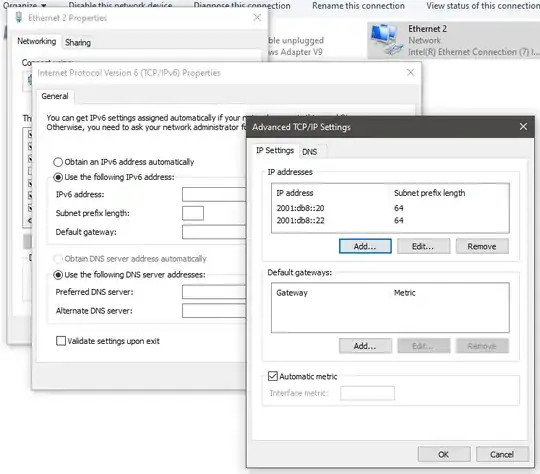If I want to set up multiple IPv6 addresses on a web server, can I do this without using virtualization/VMs?
How would I do this on modern Linux kernels (5.x) or Windows Server 2016/2019?
Relatedly, is it possible to use the virtualization features of a NIC without using virtualization on the OS or CPU side? I know that it's possible to use the SR-IOV feature on NICs with containers, not just VMs. Could I use SR-IOV or similar without using containers or VMs, just dishing out the NIC to different bare metal web server app instances?
Thanks.
